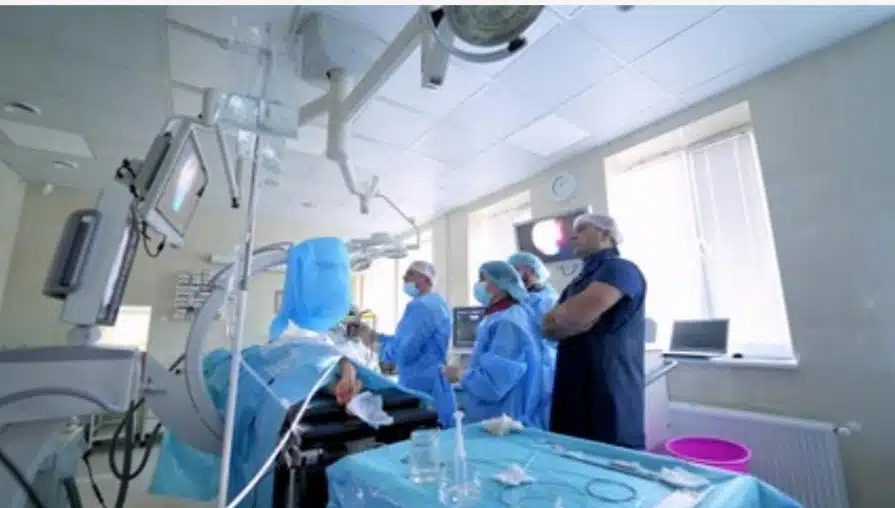Despite the commitments put in place to control HIV infections, it has continued to spread extensively across the world.
Everyone, including nurses and doctors treating HIV-positive patients are at risk of contracting the disease if they do not stick to the standard medical safety practices. The safety of a health provider or rescuer should always be the priority regardless of the victim's HIV status.
However, in this post, we will outline and discuss categorically the precautions one should take when performing CPR on an HIV-positive person.
Understanding CPR
Cardiopulmonary resuscitation is a life-saving first aid procedure performed in emergencies like near-drowning and heart attacks where a person's heartbeat or breathing has stopped. The technique involves chest compressions and artificial ventilation like mouth-to-mouth resuscitation or by AED.
The main aim of performing CPR is to preserve life until a trained professional arrives on the scene. Performing CPR alone cannot guarantee your heart restarting; it aims to restore the partial flow of oxygenated blood to the heart and brain.
Additionally, it focuses on delaying tissue death and extending chances of performing successful CPR without experiencing permanent brain damage. Generally, CPR should be continued until the victim gets a return of spontaneous circulation or is pronounced dead.
Ways of HIV transmission.
The following are some of the common ways in which HIV are transmitted:
- Contaminated syringes and needles, both accidental stick and drug use.
- Blood and its products, body-liquids like semen, vaginal, rectal, pre-seminal fluids, and infected organ transplants.
- Broken skin exposure.
- Mother to child during childbirth or breastfeeding.
- Unprotected sex with an infected partner regardless of your sexual alienation.
On the contrary, HIV cannot be transmitted by
- Caring for infected individuals under appropriate precautions.
- Sharing utensils, clothes, or bedding.
- Through food, water, or air.
- Mosquitoes or other biting.
- Hugging, touching, or shaking hands.
Risks of HIV transmission during CPR
Concerns around HIV transmission are applicable both ways: the transmission from the victim or the person performing CPR on the victim. Fortunately, the risks of contracting blood-borne pathogens when receiving or doing CPR are less compared to HIV. Having fears of getting HIV can cause delays in quick initiation
of the mouth-to-mouth ventilation as a CPR procedure. Though pathogens can be isolated from the victims’ saliva, transmissions from saliva are unusual and extremely rare.
For instance, more than 90% of the infections during resuscitation are related to high-risk skin exposure, such as an accidental needle stick. There are no instances of infection during CPR Certification.
Precautions to take when doing CPR on an HIV-positive person.
Generally, blood is the primary source of infection and a major route of transmission for medical professionals and rescuers in an emergency scene.
If there is a possibility of getting into contact with blood, rescuers and medical professionals need to be careful to avoid contact with cutaneous exposure and mucous membranes such as eyes and mouth.
In addition to this standard precaution, the following are things you need to follow to remain safe performing CPR on HIV positive people.
Practice the universal first aid and CPR precautions.
- Wash your hands before and after performing first aid. Do this also when you are wearing gloves.
- Ensure you avoid contact with blood and other body fluid.
- Use PPE whenever possible.
- Be careful of sharp objects and broken glasses.
- Cover cuts and open skins using a clean and dry dressing.
Precautions when performing mouth-to-mouth breathing.
Perform this life-saving procedure without discrimination or fear of contracting HIV. There are rare and unusual cases of HIV transmission during mouth-to-mouth resuscitation; however, avoid contact if there are eminent open-mouth sores.
It is recommended that you perform hands-only CPR for adults or teens who suddenly collapse in such a scenario. Perform this process until an automated defibrillator is available or extra professional support arrives to take over the care of the victim.
If possible, you need to learn how to use face shields and pocket masks too. Also, cultivate the habit of having a personal first aid kit with you always.
Precautions when dealing with the bleeding victim.
First, follow the universal first aid precautions, especially wearing gloves when handling mass casualties. Instruct the patient to apply pressure on the injured part.
If the person is unable to do that, use a clean and thick cloth to exert proximal pressure on the main artery to stop bleeding while also avoiding contact with the blood.
Conclusion.
Safe and precautionary measures to prevent HIV transmission are essential when performing CPR on HIV positive person. Protect yourself and others by following the standard first aid precautions effectively.
Offer mouth-to-mouth without discrimination or fear of contracting the infection unless the person has signs of open wounds on the mouth. In case of arresting bleeding, use a thick and clean cloth to offer proximal pressure on the main artery while avoiding contact with blood.


